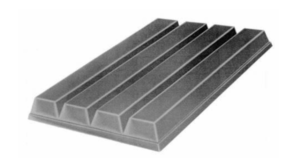 Gimme a Break, gimme a break, Break me off a piece of that _____.
Gimme a Break, gimme a break, Break me off a piece of that _____.
I’d be surprised if you don’t know how to fill in that blank. Just seeing those words written together probably sparks a craving for some chocolate and a replay of that catchy jingle in your mind on repeat (sorry about that).
That 4-piece chocolate covered-wafer bar is a staple in the candy aisles and a popular snack choice around the world. According to this Independent article, Kit Kat was actually just voted world’s best chocolate bar, with Twix and Snickers coming in second and third place, respectively. So how could the European court rule against Kit Kat and its maker, Nestle, saying that its shape is not recognizable enough? The catch is that it needs to have acquired distinctiveness throughout all the 28 countries of the EU. Give me a break.
For 16 years, Nestle has been trying to trademark its unique shape, arguing it is a distinctive feature that deserves official protection and to prevent other chocolate makers from replicating the iconic wafer shape. The battle actually started in 1937, when the Cadbury-owned Mondelēz company rolled out the Kvikk Lunsj chocolate bar, which is very similar in design, shape and size to the Kit Kat, which Nestle debuted two years prior. Their competitive coexistence seemed to be under control until 2002, when Kit Kat filed for protection of the “four trapezoidal bars aligned on a rectangular base” design with the EU’s intellectual property office.
Kit Kat did initially secure a trademark for the shape from the European Union Intellectual Property Office in 2006. But the British chocolate maker Cadbury — now a part of Mondelez International — quickly appealed that decision in 2007 starting an 11-year legal war. In and out of the courts, Nestle was eventually told in 2016 that in order to keep its trademark it had to prove the shape had acquired distinct recognition in every single country in the European Union.
The European Court of Justice ruled that even if the shape was viewed as distinctively Kit Kat in many EU countries, consumers in Belgium, Ireland, Greece and Portugal did not recognize it and Nestle had not presented enough evidence that shoppers in those places would definitively know it by its shape alone. This prompted Nestle to appeal the burden of proof and the European Court of Justice denied it sending it back to the EU’s trademark office.
N estle is determined to keep fighting to secure the trademark and will ask the appeals board to re-examine the evidence as the shape is indeed an iconic part of the bar.
estle is determined to keep fighting to secure the trademark and will ask the appeals board to re-examine the evidence as the shape is indeed an iconic part of the bar.
“Elizabeth Finn, managing director of Cowan London, an independent design agency, which has worked with top brands, says, “Where brands have distinctive and unique three-dimensional packaging, such as Coke’s iconic glass bottle, they have been trademarked successfully previously. Another example is Toblerone – its shape, designed to resemble a Swiss mountain range, has also been trademarked. Kit Kat’s failure doesn’t mean brands won’t be able to trademark their packaging design or product shape in the future.”
Just because Kit Kat didn’t prevail in trademarking the shape of its chocolate, doesn’t mean that companies have lost the right to trademark their original ideas and creations altogether. Finn says, “Brands should make sure that their products are unique and differentiated to trademark it in the first place. And make sure you trademark it early on, because once the copycats start making something similar, you will be too late.” (Transform Magazine)
While Kit Kat failed to meet the criteria necessary to trademark a shape and didn’t get a sweet outcome, Toblerone, the Hershey bar and Hershey’s Kisses are other chocolates that have previously been successful.

